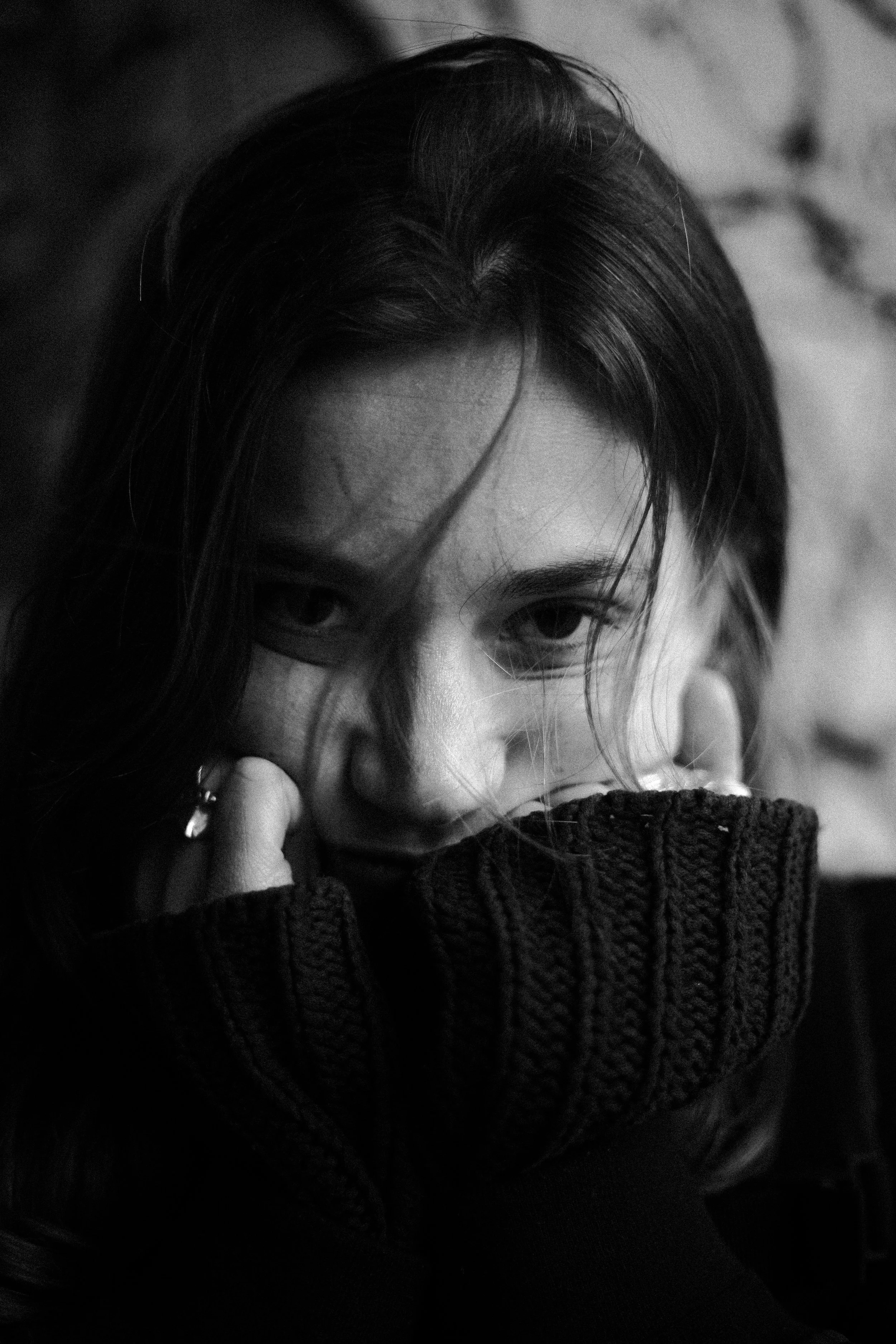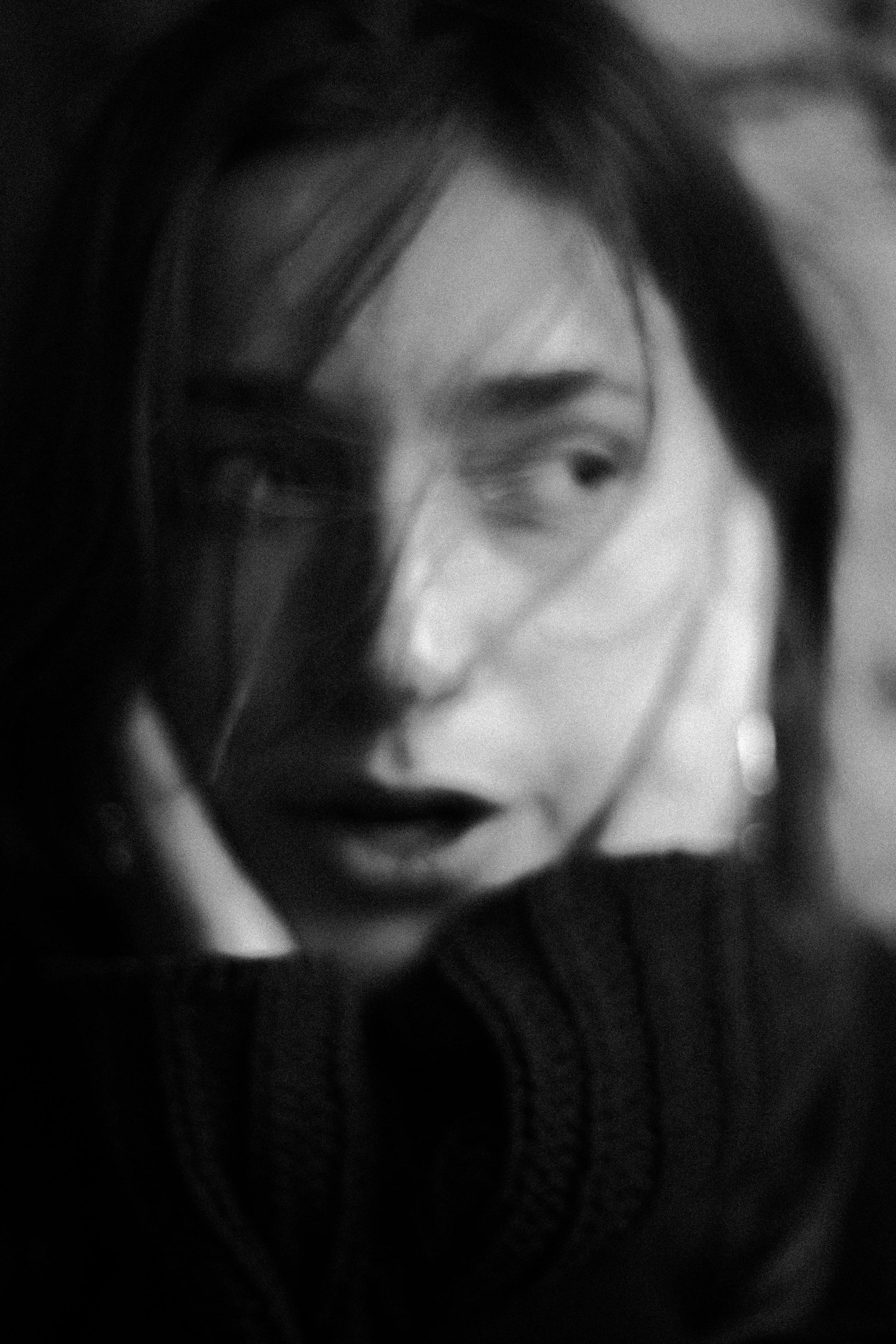Q&A: The Sound of Desire and Drama: Matilda Rowe on the Making of “Blue”
INTERVIEW
INTERVIEW
☆ BY DANY MIRELES ☆
In the world of Matilda Rowe, love isn’t just a feeling. It’s an orchestral event with swelling strings, cinematic grandeur, and lyrics that read like a confession under the rain. Rowe’s latest single, “Blue”, opens “Creases,” a two-act debut that charts the emotional landscape between growth and desire. Blending the melancholy of jazz with a modern pulse, the singer invites listeners into a journey that feels both vintage and deeply personal.
In conversation with The Luna Collective, she unravels the song’s orchestral origins, the ache of unrequited love, and how “Creases” became a coming-of-age journey written in two acts.
LUNA: “Blue” feels deeply intimate and, in a way, like a cinematic monologue. When you were creating it, did you imagine it as a song, a scene, or something in between?
ROWE: The thing I imagined was the orchestra, the big band was in my head from the beginning, and that goes hand in hand with soundtracks and scores and therefore drama. That’s why it was such an amazing day when we recorded the strings - 8 string players playing live, conducted and arranged by Milo McKinnon. Milo also plays piano on the track and quite early on referred to the walkdown section as ‘the villain coming back’. I think the theatrical nature of the song is undeniable.
LUNA: You’ve said this song is about “the ache of loving someone who can’t love you back.” What drew you to explore unrequited love as the opening theme for Creases?
ROWE It wasn’t supposed to be the opening theme originally; in fact, it was going to be the finale, simply because of its grandeur and the epic orchestral production. But once we’d recorded everything, I listened all the way through the tracklist for the first time, and Blue didn’t sit right at the end. My mate Eoin asked me to boil each song down to one word in an exercise to find a bit of clarity, and for Blue, I said ‘desire’, a nd he said ‘you have to start with desire surely,’ and he was right. I love the fact that Act One starts with “Blue,” ‘How can I move on from you when no one else compares to you?’ and ends with “T-shirt,” ‘I need to get away from you.’ “Blue” is a fantastical concept of love and what love could be, but it isn’t real. It’s a big sweeping statement, ‘Know that I love you, now I know what that means, but that is disproved through Act One, setting Act Two as the reckoning, the inevitable growth that comes with experience.
LUNA: The arrangement of this “Blue” is reminiscent of old jazz standards fused with modern edge. How did you find this balance of vintage storytelling and contemporary sound?
ROWE: I think it’s probably a product of my influences. I don't think it was a deliberate decision. Something about that feeling of not being able to express how you feel can intensify the emotion, and that brought out the big jazz ballad energy. On one hand, the ballad nature of the song came from the Adele in me, whose story is one of the best. The bond tunes were such seminal tracks throughout my childhood and were 100% influences on writing to post-production. I learnt to sing with Jazz Standard; they were the building blocks of my voice and my style. I reference old jazz tracks because they were actually clues to the love interest that I was talking about, which is funny - very dramatic and rom-com-esque of me. But on the other hand, there’s also this kind of R&B groove in there, which brings it into a different era and pulls on my Amy Winehouse and London influences. The lyrics are an old feeling, but very much in my own words, and I think that’s what makes it feel both old and new at the same time.
LUNA: As I said, this song is cinematic. If it were part of a film, what kind of scene do you think could be a soundtrack?
ROWE: The first scene that came to mind was the rain scene in Notting Hill because it’s just such an iconic confession of love. But I reckon “Blue” would be great in the soundtrack over a scene where someone realizes they’re in love with someone at a really inconvenient and public time, and we witness them having to suppress it and wait. Painful.
LUNA: How do visuals and imagination influence your songwriting? Do you picture the scene while composing, or does the music shape the picture
ROWE: With “Creases,” the visuals and the world have come after the music. I wrote those songs in truthful, big moments over six years with no real plan of stringing them together into a larger project, so stepping back and looking at them all was another step in the creative process that I love so much. It’s been one of the biggest joys to conceptualise the story of “Creases” through the covers, lyric videos, and music videos. They’re all thought about and deliberated, and working with Robert Bass, my insanely talented friend and collaborator, has meant that ideas have become a rich reality throughout this rollout process.
LUNA: What was the most surprising moment that happened while recording “Blue”?
ROWE The most surprising and my favourite moment of recording “Blue” is the impeccably timed siren that passed by the studio while we were recording the outro. It’s a rare moment in the song where there’s not much else going on, and the siren almost mimics my voice in this accidental foreshadowing and foreboding way. That is the kind of magic that comes when you involve the room as a musical character and embrace it all as opposed to trying to control it. I love the idea that someone might be listening to it in the middle of the countryside and hear the London siren.
LUNA: Creases is an act of two parts. What does each act represent narratively? How do you envision the transition between Act I and Act II?
ROWE: If Act I is the happening, Act II is the reckoning. Act I is the happening: the relationship, the big caught up feelings, and ends at a point of stillness and decision in a T-shirt. Then Act Two is the reckoning: the crash after the fall and finding the strength to rise again. The covers are a manifestation of that - the photos used in Act I were from 2023, and the photos used for Act II were taken in 2025. There is a real sense of a woman being born in Creases, I believe: the coming-of-age story that somewhat made itself through life happening whilst I was making this project. We’re going to film a music video for “Creases”: the final and title track in December, and I’m so excited for that.
LUNA: What’s one moment from a live show that stayed with you?
ROW: I had to ask my friend about this question because I often blackout when I’m performing! He said that on the “Never Do” single release, the collective jaw dropped when I performed “Blue” as a big moment. People who knew I did this but didn’t know what I do, and realising the scale and impact of the live storytelling was really special. That was a great night. Performing live is where my music and I come into our own.
LUNA: What’s something new you want to experiment with in your next work? Either musically or conceptually?
ROWE: When I set out to make “Creases,” I had a kind of purist mentality around it - I put principles and rules on the project: free time, all live, no autotune, rebellion against the squeezed, perfect, electronic sound I was bored of hearing. I am glad I did that because that is what this project is about - the real and the human, and as a result, AI couldn’t do it if it tried. However, after making such a purist debut record, the bets are off, no rules. I’m obsessed with Dijon and Saya Gray at the moment, and I think what they both do so brilliantly is mix the acoustic with the electronic. I’m excited to experiment with drum machines and synths in my storytelling, to build worlds in different ways. I don’t really believe in genre, so the sky’s the limit.
LUNA: Finally, what’s next for you after this project? Should we expect a tour, or more music coming soon?
ROWE: Hey, I would love to tour. If someone can make that happen, let’s go! On November 13th, Creases Live is happening. At the Cockpit theatre, in the round, with a 9-piece ensemble, it’s going to be Act Two is coming out in the new year, and for that, we’re going to do a full Creases experience where we listen all the way through and watch the accompanying videos that are all such a rich part of the world that we’ve been building along the way, so I’m really excited about that.



